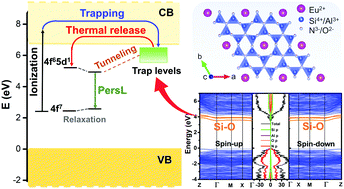Inorg. Chem. 2019, 58, 8, 5006–5012 https://pubs.acs.org/doi/abs/10.1021/acs.inorgchem.9b00028

Manipulating the distribution of rare earth activators in multiple cations’ sites of phosphor materials is an essential step to obtain tunable emission for the phosphor-converted white-light-emitting diodes (pc-WLEDs). However, it remains the challenge to realize the photoluminescence tuning in the single-phased phosphor with single activator, due to the uncertain location of doped ions and adjustable crystallographic sites. Herein we reported the β-Ca3(PO4)2-type solid solution phosphors (Ca8.98–xSrx)MgK(PO4)7:2%Eu2+ (x = 0–8.98) and the effects of replacing Ca2+ by Sr2+ ions on the phase structures and color-tunable emission were investigated in detail. Tunable color emission has been realized by manipulating the redistribution of Eu2+ ions among different cation sites with adjustable chemical environment, and the related mechanism on the local structures has been discussed. The high Ra (85) and low color temperature (CCT) (4465 K) values of the as-fabricated WLEDs lamp indicate that (Ca4.98Sr4)MgK(PO4)7:2%Eu2+ can act as a promising white-emitting phosphor for single-phased pc-WLEDs. This work provides a new insight into the tuning of the compositions and multiple activator sites toward single-phased white emission.








